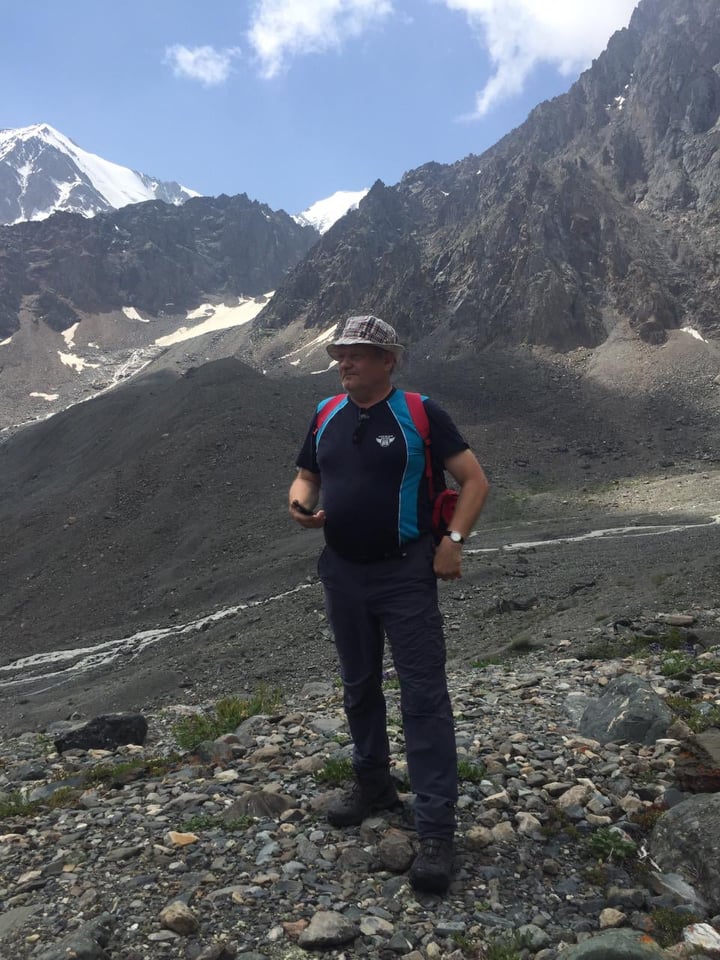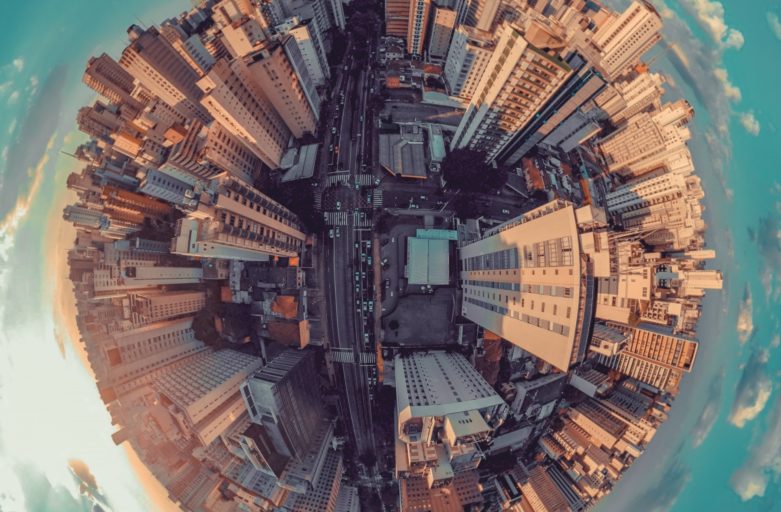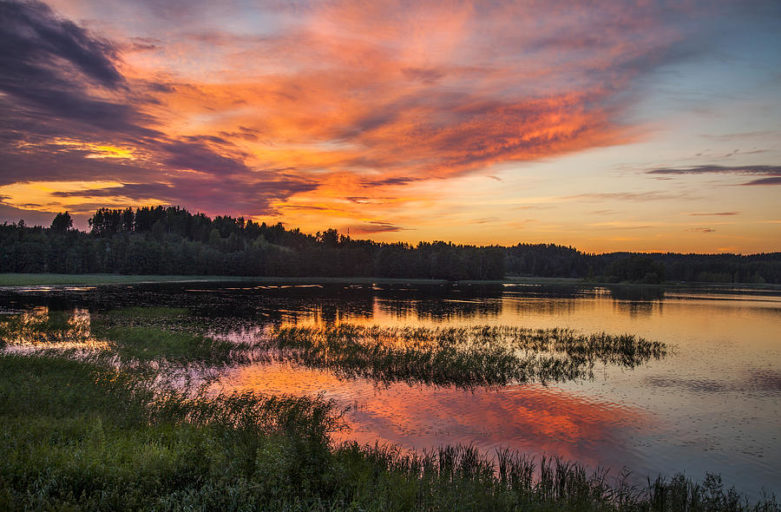A new blog «Science at TSU» has recently appeared on the website of Tomsk State University (TSU). The authors are members of the Laboratory for Comparative Research in Quality of Life.
One of the latest blog publications is an interview with Professor Sergey Kirpotin, Doctor of Biology, Director of the TSU Center of Excellence “BioClimLand”.
Most problems that people need to deal with, starting with climate change and ending with the coronavirus pandemic, are man-made. People create global challenges and then heroically face up to them. Unfortunately, we do not see any direct connection between the events. This was something we proposed to discuss to Professor Sergey Kirpotin.
What are the most current environmental research conducted by the TSU scientists now?
There are several major environmental projects that are carried out at TSU right now. In some of them, we show a similar level of success like our international colleagues do. In some, we work ahead of the curve, proposing state-of-the-art research ideas.
First, we came up with an idea to consider Siberia a natural “mega-platform”. Its power and importance may be compared to the Large Hadron Collider. It is a unique place with the Vasyugan Swamp, the largest swamp in the northern hemisphere, a major reservoir of fresh water for the region. This place is a trap for carbon dioxide that has been collected by the ecosystems of the planet for millions of years. The Swamp functions as a refrigerator that regulates the global climate.
Our second idea is designing a mega-profile that is both an infrastructure and a newest approach to studying the environment. Many international projects aimed at researching natural processes, for example, T-MOSAiC , use it, and our international colleagues acknowledge our authorship. The idea of this approach is very interesting: it is not possible to limit the area of research by a particular place, studying some local natural processes. It is absolutely necessary to build a network and study the environment outside the region. Only this can help to understand the essence of local processes. For example, it is impossible to study the Arctic locally, regarding that it is a region that changes faster than all other world’s regions and has a huge impact on the global climate. It is vital to study the Arctic outside its borderlines. Our Siberian Ob River forms at the confluence of the Biya and Katun Rivers that have their origins in the Altay Mountains and flows into the Arctic Ocean. It literally brings along everything that it gathers on its way. It means that there is a major biogeochemical flow that forms in the South and influences the nature of the North.
Here is another interesting example: it turned out that “our” Asian anticyclone that forms in Siberia and Mongolia, influences monsoons and typhoons in the Asia-Pacific region. When our Japanese colleagues learned about it, they made the studies of the Siberian nature one of their priorities. Using the mega-profile approach, we created a network of research stations. Today, TSU is the only university whose three stations are part of the INTERACT international program.
What are the major ecological challenges the people of the world need to deal with? Is there a possibility for us to reverse some of the negative processes?
The most important thing is that the global temperature is really rising. Just like for people, it is a symptom that indicates illness. Global warming is a reality that cannot be contradicted by qualified sceptics any longer. However, they do not hurry to acknowledge its existence either. It is important to be aware that the main signal of global warming is not just temperature rising but a growing number of extreme weather conditions and catastrophes. Some experts call this type of climate “hysterical”.
Among other remarkable phenomena that we have been observing lately are anticyclones that stay for longer periods of time than they used to. Many people remember the summer of 2012 when anticyclone blocked the Atlantic air masses that were supposed to bring rains. A, so called, heat wave stroke and caused many terrible things, such as drought, fires, and people’s deaths. Another considerably new phenomenon is that air masses started moving along meridians instead of moving along latitudes. Therefore, cold air masses from the Arctic may make sharp turns to the South, collide with warm air and bring horrible consequences, such as tornadoes, hailstorms, and floods.
Now, many people watch movies about pandemics and other catastrophes but in reality we may face scenarios that can easily compete with Hollywood blockbusters. Global warming causes melting of the permafrost that preserves a variety of viable ancient microorganisms. Several years ago, in the Yamalo-Nenets region scientists contained an outbreak of the Siberian anthrax that had been kept in the top layer of the permafrost that contained the death spores. Along with reindeer moss, they were ingested by animals already weakened by the heat. It took a lot of joint efforts to stop the outbreak. But we could have faced a nightmare much more serious than the coronavirus pandemic.
People themselves have changed dramatically. Their immune system has been weakened by antibiotics. They got used to living in sterile conditions. Many are surprised by the fact that countries with better living conditions suffer from coronavirus more than countries with larger populations and worse hygienic standards. It is explained by the fact that people in the third world countries got used to various infections. Sterile environment kills the immune system. People need to deal with bad microorganisms so that they are able to develop resistance and survive.
As for the possibility to reverse some negative processes, sorry to say, it is impossible. Research is aimed at figuring out how we can slow them down and understanding the cause of all problems. And that can turn people toward a more environmentally friendly economy. There is a wrong belief that only rich countries can afford green economy because recycling and green technologies cost a lot. However, people must change their habits and start separating waste, saving electricity, and managing manufactures responsibly in the first place. As we see, it is not about finance, it is about changing our mentality, which is the most difficult thing to do.
Siberia is far from all global hubs with large populations. It seems to be an advantage today, when such an isolation provides a feeling of safety. What other resources do we have that can help us to get through the crisis?
Our rough climate makes us stronger and more resistant. By the way, annual flue epidemics are shorter and less severe here than in other places of the world. Low temperature kills the virus faster, whereas in countries with mild climate the virus stays longer.
Besides, we can always turn toward the homegrown produce. Siberian territory is very resourceful, which is another advantage in times of extreme situations. Regarding that, we are very different from our neighbors who have developed better in terms of information technology. One can see that when communicating with our international colleagues and students at summer schools. Our guests from China showed the worst surviving capacity: the young Chinese cannot build a fire, light a stove, or dry their shoes. The new generation is very good at dealing with their gadgets, but if something serious happens, half of civilization will die because they won’t be able to cook food over an open fire. A two-day blackout for people in other countries is a disaster. For us it is a challenge but we can deal with it.

We want to believe that after the pandemic we will live “happily ever after” without any serious problems. Is it even possible?
The nature is restoring itself now but everything is going to get back where it was. People will catch up very quickly and try to compensate for stopping air communication and all kinds of manufactures. Carbon dioxide has already been collected in the atmosphere, it is necessary to mind that it stays there for at least 120 years. This short break means nothing for the nature. Over the last period of time, people have burnt incredible amounts of natural fuel that had been accumulating in the subsurface for millions of years. This led to increasing the amount of greenhouse gases, which is the major cause for global warming. In its turn, global warming leads to many other problems, for instance, the depletion of drinking water sources. In the near future, we may expect a lot of climate refugees and nobody is ready for that, just like nobody was ready for the pandemic. Instead of collaborating and working together on problems, people have been separating even more. We can see it on different levels: countries live their lives and solve their own problems; people in the same country stand against those who get the virus and those who have different views on what is going on. We have never lived globally, though we talk about it a lot. People do not know how to live together and act in agreement with each other. We do not have a globally-centered thinking, meaning, we do not realize that the Earth is our Motherland, not a city or a country.

The only case that can be remembered as a case of solving a global problem in collaboration was the situation around the Montreal Protocol in the mid 80s of the last century. The treaty was structured around several groups of halogenated hydrocarbons that depleted stratospheric ozone. A miracle happened: politicians could agree on not using them in producing refrigerators. We can be almost a hundred percent sure that if it happened now, nobody would be able to solve this problem. This is how competitive and hostile the politics are these days.
Ecology is a sphere of knowledge and a science. It is divided into two types: 1) shallow ecology that separates people from the nature and puts them above it, and 2) deep ecology that considers us a part of nature. Shallow ecology is a hugest problem of our civilization. People think that they are the center of the universe. It is well presented in our languages, for example, there is an expression “to protect the environment”. To protect from whom? From ourselves! Deep ecology is much wiser. The Gaia hypothesis proposes to see people as a virus on the surface of the Earth. The virus that is capable of killing the planet. That is why the planet wants to get rid of the virus. This is what we are observing today. This is a lesson for the humanity. And we need to pass the exam but… The preliminary results are non-satisfactory. It means that very soon we will face another exam and we will do it until we realize that people are part of nature. And the Earth is our home!


